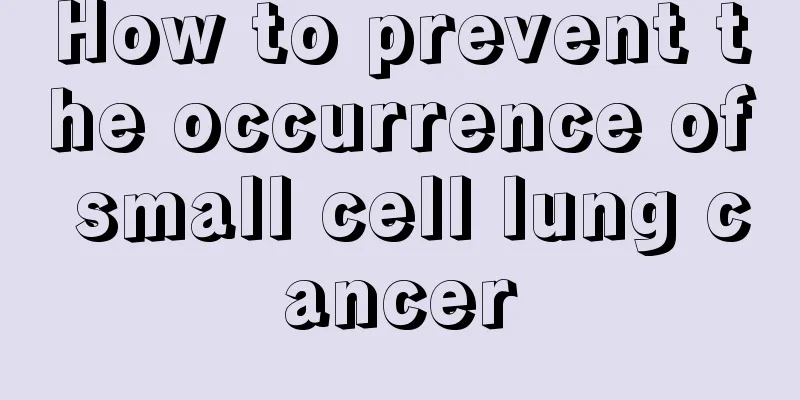If early stage cancer is removed surgically, will it not recur?

|
When we get cancer, the first thing we think of is to cut it off. This is understandable and a natural idea. Therefore, among the four major cancer treatments, surgery was the earliest to appear. Cutting it off is the most direct approach. With the emergence of other treatment methods, such as radiotherapy, chemotherapy, etc., and the adoption of comprehensive treatment, there is no need to perform such a large-scale surgical operation. From extended radical mastectomy to modified radical mastectomy, there is also minimally invasive surgery, and some can even perform organ function preservation surgery, such as breast-conserving surgery and anal-preserving surgery. Why does the lesion recur after it is removed? Take breast cancer for example. Why does breast cancer still recur after mastectomy? Cancer is complicated. On the surface, a cancer only grows locally. For example, in early breast cancer, the tumor is not large and only grows in the breast. Logically, if you just remove the breast, the cancer will be eliminated. How can it recur? In fact, even early breast cancer can recur. One of the reasons is the biological characteristics of cancer. Cancer is inherently invasive and has the ability to spread and metastasize. Just because it is in the early stages, cancer cells do not lose this characteristic. Therefore, those cancers that appear to be in the early stages may already be latently metastasizing. There may already be cancer cells in the blood or lymph, but they cannot be detected. It is like if you cut down a tree, it may already have seeds that have drifted far away, and one day in the future it may sprout again and grow into a tree again. The same is true for cancer. If you cut off the visible cancer lesions, it does not mean that all cancer cells are completely eliminated. What we cut off is only the visible ones that are visible to the naked eye and visible to imaging tests (CT, MRI, etc.). However, there are still cancer cells that are invisible to the naked eye and imaging tests that are lurking somewhere. One day in the future, if there is an opportunity, it may rear its head. Of course, it is only a possibility. Therefore, except for very early stage cancer, in most cases, we still need to use other treatment methods, such as radiotherapy, chemotherapy, targeted drug therapy, endocrine therapy, etc., to adopt comprehensive treatment, that is, to block cancer cells from all directions and angles as much as possible to reduce the probability of recurrence. However, this is only a probability, and it is not possible to absolutely eliminate it 100%. Through the above analysis, you will know that even if you remove the breast, breast cancer may still recur. This is not only true for breast cancer, but also for other cancers. If you remove it, it will definitely not recur, then cancer is too easy to cure, and surgery is the only treatment method to cure cancer. In fact, of course, this is far from the case. Cancer prevention is better than treatment In fact, it is not just about cancer treatment, but also about prevention. International movie star Angelina Jolie must be well known to everyone. She has a family history of breast cancer and ovarian cancer, and genetic testing has confirmed that she carries the "defective" gene BRCA1. She has a very high risk of breast cancer and ovarian cancer. In order to reduce the risk, she underwent bilateral mastectomy, which reduced her chances of getting breast cancer from 87% to 5%. You see, even if both breasts are removed for prevention, although the risk of cancer is greatly reduced, it is still not 100%. In fact, medicine is largely probabilistic medicine. Those who say everything is 100% certain are witch doctors and liars. Many of our prevention and treatment are to reduce the risk probability and strive for the greatest probability. Therefore, in order to reduce the probability of postoperative recurrence and metastasis, first, depending on the situation, complete the necessary treatment (chemotherapy, radiotherapy, targeted therapy, endocrine therapy, etc., depending on the different situations) as much as possible; second, protect the body's immunity, maintain a good lifestyle and a good mentality; third, conduct regular follow-up examinations to detect possible recurrence and metastasis early and take early treatment. |
<<: Oncology experts teach you how to prevent aflatoxin, a first-class carcinogen
>>: 3 types of cancer are caused by inflammation! What is the pathogenesis?
Recommend
Learn about the peak period of recurrence after rectal cancer surgery
Rectal cancer is a common disease with many cause...
What is the reason for a tasteless mouth
In life, many people often say that they feel a l...
Do I need radiotherapy after cervical cancer surgery?
For the treatment of cervical cancer, it cannot b...
What is the most thorough way to cover a tattoo?
Tattoo removal is the fastest and most thorough w...
How to effectively treat procrastination
Procrastination is a common postponing behavior t...
How to treat cerebral hemisphere tumors? What are the treatments for cerebral hemisphere tumors?
The clinical manifestations of tumors in differen...
What is the correct way to use dental floss?
In our daily lives, many people's teeth are n...
Does tap water have parasites?
The tap water we usually drink needs to be bottle...
Can I lose weight by skipping dinner
Many people do not eat at night in order to lose ...
How to keep shrimp fresh in the refrigerator
Mud shrimp is a commercial name, also known as mu...
What to do with a dry nose? 7 tips for taking care of it
In the dry environment of winter, or in condition...
What medicine is effective for enteritis
Many people will develop enteritis without knowin...
Left knee pain
There are knees on both the left and right legs o...
Can lemon remove scars?
Lemons contain a lot of vitamin C and citric acid...
How long does it take for Nexavar to take effect on liver cancer? Guidance and suggestions for liver cancer patients before taking the medicine
Liver cancer is a malignant tumor of the liver, w...









